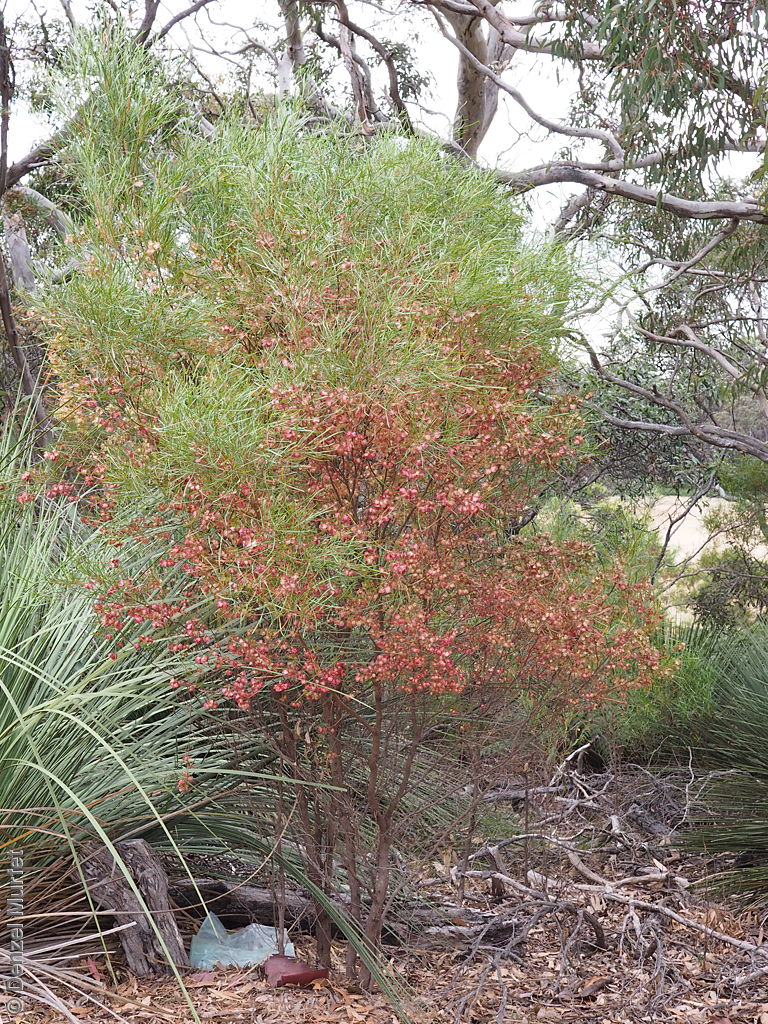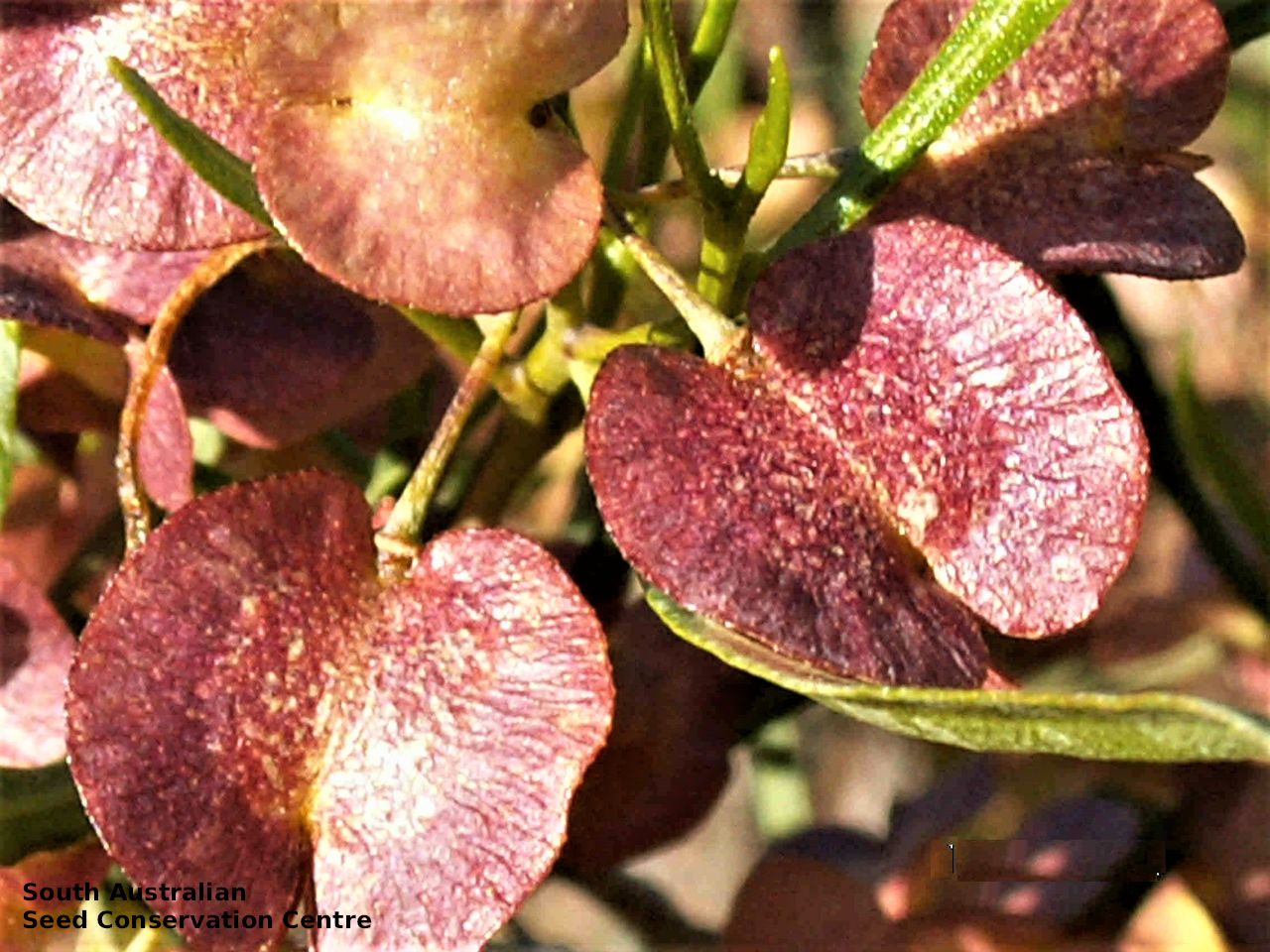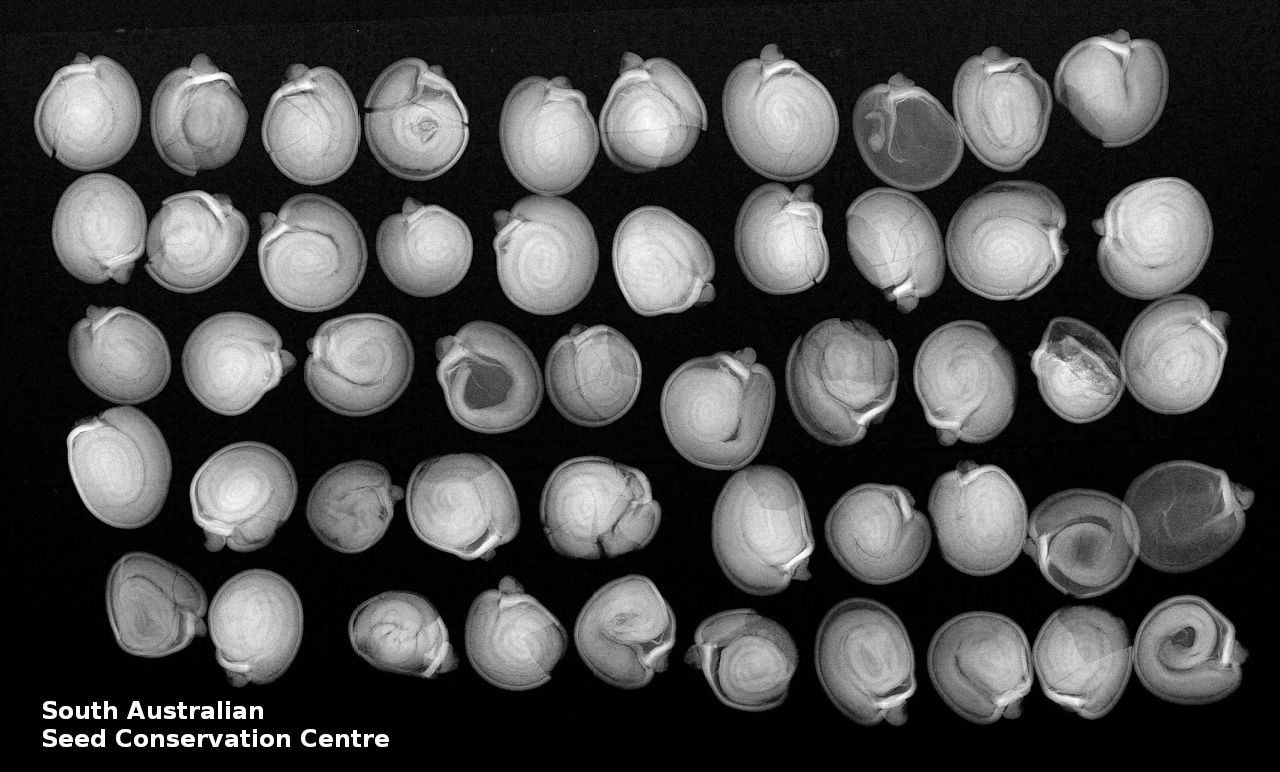Narrow-leaf Hop-bush,
Slender Hop-bush
Display all 24 images
























Regional Species Conservation Assessments per IBRA subregion.


Least concern
Near threatened
Rare
Vulnerable
Endangered
Critically endangered
Extinct
Data deficient
Adelaide
Arkaroola
Ceduna
Coober Pedy
Hawker
Innamincka
Marla
Marree
Mount Gambier
Oodnadatta
Renmark
Wudinna
Keith
Yunta
Display IBRA region text
| Bridgewater (NCP01) | Naracoorte Coastal Plain | Near Threatened [taxonomic issues] |
| Lucindale (NCP03) | | Near Threatened [taxonomic issues] |
| Kangaroo Island (KAN01) | Kanmantoo | Least Concern |
| Fleurieu (KAN02) | | Rare (IUCN: RA d(ii)) [one taxon that has many varieties; difficult to ID ssp's; subject to integration] |
| Mount Lofty Ranges (FLB01) | Flinders Lofty Block | Rare (IUCN: RA d(ii)) [one taxon that has many varieties; difficult to ID ssp's; subject to integration] |
| Broughton (FLB02) | | Least Concern |
| Olary Spur (FLB03) | | Least Concern |
| Southern Flinders (FLB04) | | Least Concern |
| Northern Flinders (FLB05) | | Least Concern |
| Central Flinders (FLB06) | | Least Concern |
| Southern Yorke (EYB01) | Eyre Yorke Block | Rare (IUCN: RA d(ii)) (Probable Decline) |
| St Vincent (EYB02) | | Least Concern |
| Eyre Hills (EYB03) | | Least Concern |
| Talia (EYB04) | | Least Concern |
| Eyre Mallee (EYB05) | | Least Concern |
| South Olary Plain (MDD01) | Murray Darling Depression | Least Concern (Probable Increase) |
| Murray Mallee (MDD02) | | Least Concern (Probable Increase) |
| Lowan Mallee (MDD04) | | Near Threatened |
| Braemer (MDD07) | | Least Concern |
| Murray Scroll Belt (RIV06) | Riverina | Least Concern (Probable Increase) |
| Myall Plains (GAW01) | Gawler | Least Concern |
| Gawler Volcanics (GAW02) | | Least Concern |
| Gawler Lakes (GAW03) | | Least Concern |
| Arcoona Plateau (GAW04) | | Least Concern |
| Kingoonya (GAW05) | | Least Concern |
| Torrens (GAW06) | | Least Concern |
| Roxby (GAW07) | | Least Concern |
| Commonwealth Hill (GAW08) | | Least Concern |
| Maralinga (GVD03) | Great Victoria Desert | Least Concern |
| Kintore (GVD04) | | Least Concern |
| Tallaringa (GVD05) | | Least Concern |
| Yellabinna (GVD06) | | Least Concern |
| Carlisle (NUL01) | Nullarbor | Least Concern |
| Nullarbor Plain (NUL02) | | Near Threatened |
| Yalata (NUL03) | | Least Concern |
| Barrier Range (BHC01) | Broken Hill Complex | Least Concern |
| Barrier Range Outwash (BHC04) | | Least Concern |
| Bimbowrie (BHC05) | | Least Concern |
| Curnamona (BHC06) | | Least Concern |
| Simpson Desert (SSD02) | Simpson Strzelecki Dunefields | Least Concern |
| Dieri (SSD03) | | Least Concern |
| Warriner (SSD04) | | Least Concern |
| Strzelecki Desert (SSD05) | | Least Concern |
| Breakaways (STP01) | Stony Plains | Least Concern |
| Oodnadatta (STP02) | | Least Concern |
| Murnpeowie (STP03) | | Least Concern |
| Witjira (STP06) | | Least Concern |
| Baltana (STP07) | | Least Concern |
| Sturt Stony Desert (CHC02) | Channel Country | Least Concern |
| Coongie (CHC06) | | Least Concern |
| Lake Pure (CHC07) | | Least Concern |
| Mann-Musgrave Block (CER01) | Central Ranges | Least Concern |
| Watarru (CER02) | | Least Concern |
| Everard Block (CER03) | | Least Concern |
| Tieyon (FIN03) | Finke | Least Concern |
| 2 of 4 subregions | Naracoorte Coastal Plain | Near Threatened |
| 2 of 2 subregions | Kanmantoo | Least Concern , Rare |
| 6 of 6 subregions | Flinders Lofty Block | Least Concern , Rare |
| 5 of 5 subregions | Eyre Yorke Block | Least Concern , Rare |
| 4 of 6 subregions | Murray Darling Depression | Least Concern , Near Threatened |
| Murray Scroll Belt (RIV06) | Riverina | Least Concern (Probable Increase) |
| 8 of 8 subregions | Gawler | Least Concern |
| 4 of 4 subregions | Great Victoria Desert | Least Concern |
| 3 of 3 subregions | Nullarbor | Least Concern , Near Threatened |
| 4 of 4 subregions | Broken Hill Complex | Least Concern |
| 4 of 4 subregions | Simpson Strzelecki Dunefields | Least Concern |
| 5 of 7 subregions | Stony Plains | Least Concern |
| 3 of 4 subregions | Channel Country | Least Concern |
| 3 of 3 subregions | Central Ranges | Least Concern |
| Tieyon (FIN03) | Finke | Least Concern |
Botanical art
Kath Alcock paintings: 15
Prior names
Dodonaea angustissima
Dodonaea attenuata var. linearis
Dodonaea attenuata
Common names
Narrow-leaf Hop-bush
Slender Hop-bush
Etymology
Dodonaea named after Rembert Dodoens (1517-1585), a Flemish physician and botanist, also known under his Latinized name Rembertus Dodonaeus. Viscosa from the Latin 'viscosus' meaning sticky, alluding to the leaves being viscous. Angustissima from latin meaning very narrow or thin, referring to the leaves.
Distribution and status
Found across most parts of South Australia growing in dry sclerophyll forest, woodland and sand plains. Also found in all mainland States. Native. Common in South Australia. Common in the other states.
Herbarium regions: North Western, Lake Eyre, Nullarbor, Gairdner-Torrens, Flinders Ranges, Eastern, Eyre Peninsula, Northern Lofty, Murray, Yorke Peninsula, Southern Lofty, Kangaroo Island, South Eastern, Green Adelaide
NRM regions: Adelaide and Mount Lofty Ranges, Alinytjara Wilurara, Eyre Peninsula, Kangaroo Island, Northern and Yorke, South Australian Arid Lands, South Australian Murray-Darling Basin, South East
AVH map: SA distribution map (external link)
Plant description
Dioecious or polygamous-dioecious spreading or erect shrubs to 4 m high. Leaves linear to narrow-oblong, to 9.5 cm long and 0.4 cm broad, viscous, with flat glands, glabrous, margin entire to irregularly sinuate to irregularly denticulate. Flowers in terminal panicles with small yellow-green flowers. Sepals 3 or 4, stamens usually 8. Generally, the subspecies is readily distinguishable by its narrow linear leaves but many intermediates exist where two or more subspecies are sympatric. This subspecies differs from the other three subspecies found in South Australia by having the narrowest leaves. Flowering between September and January. Fruits are red-brown 3- or 4-winged capsule to 28 mm long and 28 mm wide, wings extending from the base to the apex of the capsule. Seeds are black, globular to 3 mm long and 3 mm wide with a short brown aril. Seed embryo type is folded.
Seed collection and propagation
Collect seeds between December and March. Collect winged capsules that contain hard black seeds, usually when capsule is turning red or brown with black seeds. Place capsules in a tray and leave to dry for 1 to 2 weeks. Then rub the capsules by hand to dislodge the seeds. Use a sieve to separate the unwanted material. Store the seeds with a desiccant such as dried silica beads or dry rice, in an air tight container in a cool and dry place. Seed viability is usually high. This species has physiological dormancy that needs to be overcome for the seed to germinate (e.g. nicking the seed coat).
| Location | No. of seeds
(weight grams) | Number
of plants | Date
collected | Collection number
Collection location | Date
stored | % Viability | Storage
temperature | BGA
MSB | 17,300 (138 g)
17,300 (138 g) | 80 | 22-Jan-2004 | MKJ23
Eyre Peninsula | 1-Sep-2004 | 80% | +5°C, -18°C |
Location: BGA — the seeds are stored at the Adelaide Botanic Gardens, MSB — the seeds are stored at the Millennium Seed Bank, Kew, England.
Number of plants: This is the number of plants from which the seeds were collected.
Collection location: The Herbarium of South Australia's region name.
% Viability: Percentage of filled healthy seeds determined by a cut test or x-ray.
Germination table:
Display

























